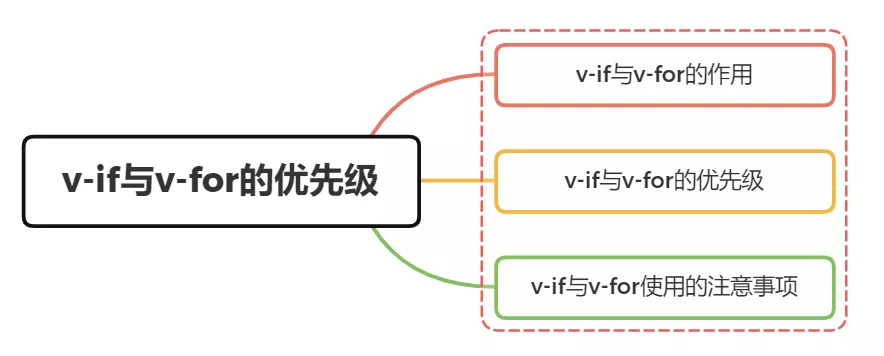

v-if和v-for的优先级是什么? - 安语未
source link: https://www.cnblogs.com/mo3408/p/16658735.html
Go to the source link to view the article. You can view the picture content, updated content and better typesetting reading experience. If the link is broken, please click the button below to view the snapshot at that time.


v-if 指令用于条件性地渲染一块内容。这块内容只会在指令的表达式返回 true值的时候被渲染
v-for 指令基于一个数组来渲染一个列表。v-for 指令需要使用 item in items 形式的特殊语法,其中 items 是源数据数组或者对象,而 item 则是被迭代的数组元素的别名
在 v-for 的时候,建议设置key值,并且保证每个key值是独一无二的,这便于diff算法进行优化
两者在用法上
<Modal v-if="isShow" /><li v-for="item in items" :key="item.id">{{ item.label }}</li> |
二、优先级
v-if与v-for都是vue模板系统中的指令
在vue模板编译的时候,会将指令系统转化成可执行的render函数
<div id="app"><p v-if="isShow" v-for="item in items">{{ item.title }}</p></div> |
创建vue实例,存放isShow与items数据
const app = new Vue({el: "#app",data() {return {items: [{ title: "foo" },{ title: "baz" }]}},computed: {isShow() {return this.items && this.items.length > 0}}}) |
模板指令的代码都会生成在render函数中,通过app.$options.render就能得到渲染函数
_l是vue的列表渲染函数,函数内部都会进行一次if判断
初步得到结论:v-for优先级是比v-if高
再将v-for与v-if置于不同标签
<div id="app">
<template v-if="isShow">
<p v-for="item in items">{{item.title}}</p>
</template>
</div>
ƒ anonymous() {with(this){return_c('div',{attrs:{"id":"app"}},[(isShow)?[_v("\n"),_l((items),function(item){return _c('p',[_v(_s(item.title))])})]:_e()],2)}} |
这时候我们可以看到,v-for与v-if作用在不同标签时候,是先进行判断,再进行列表的渲染
我们再在查看下vue源码
源码位置:\vue-dev\src\compiler\codegen\index.js
export function genElement (el: ASTElement, state: CodegenState): string {
if (el.parent) {
el.pre = el.pre || el.parent.pre
}
if (el.staticRoot && !el.staticProcessed) {
return genStatic(el, state)
} else if (el.once && !el.onceProcessed) {
return genOnce(el, state)
} else if (el.for && !el.forProcessed) {
return genFor(el, state)
} else if (el.if && !el.ifProcessed) {
return genIf(el, state)
} else if (el.tag === 'template' && !el.slotTarget && !state.pre) {
return genChildren(el, state) || 'void 0'
} else if (el.tag === 'slot') {
return genSlot(el, state)
} else {
// component or element
...
}
在进行if判断的时候,v-for是比v-if先进行判断
最终结论:v-for优先级比v-if高
三、注意事项
- 永远不要把
v-if和v-for同时用在同一个元素上,带来性能方面的浪费(每次渲染都会先循环再进行条件判断) - 如果避免出现这种情况,则在外层嵌套
template(页面渲染不生成dom节点),在这一层进行v-if判断,然后在内部进行v-for循环 -
<template v-if="isShow"> <p v-for="item in items"> </template> - 如果条件出现在循环内部,可通过计算属性
computed提前过滤掉那些不需要显示的项 -
computed: { items: function() { return this.list.filter(function (item) { return item.isShow }) } }
Recommend
About Joyk
Aggregate valuable and interesting links.
Joyk means Joy of geeK